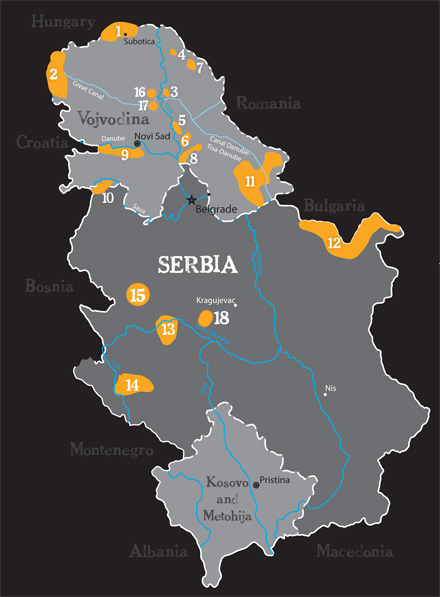Welcome to Serbia!

Breeding Season: In partially flooded forests, we will be searching for Black, Green and Middle Spotted Woodpeckers, Black Stork, Honey Buzzard, White-tailed Eagle, Black Kite and Collared Flycatcher. Grey-headed Woodpecker can be heard, but it is not that easy to spot. Along our route, we will be visiting the adjoining Kolut and Svilojevo fishponds to experience our first Savi’s Warbler, Common Pochard, Spotted Crake, Sand Martin, Whiskered Tern and Penduline Tit, among many others.
Autumn Migration: With low August water levels, the forest floor should be dry. We will be searching for Honey Buzzard, Black Kite, Black Stork, Black, Green and Middle Spotted Woodpeckers. In August, Red Deer start roaring, displaying and battling with rivals, and their roar will fill the forests. Along our route, we will be visiting the adjoining Kolut and Svilojevo fishponds to experience our first Whiskered Tern, European Bee-eater, Penduline Tit, Little Bittern, Yellow Wagtail, Sand Martin (in large flocks) and Marsh Harrier, among many others.

Birds in Serbia
379 bird species have been recorded in Serbia and Montenegro. Of these, 333 occur regularly and 260 breed. Among the breeding species, there are five species of global conservation concern: Ferruginous Duck, Imperial Eagle, Lesser Kestrel, Great Bustard and Corncrake. Other Serbian specials include Pygmy Cormorant, Black Stork, Glossy Ibis, Spoonbill, Griffon Vulture, Saker Falcon, Common Crane and Collared Flycatcher.

Wild life in Serbia
A huge variety of wildlife thrives here, making Serbia one of Europe's greatest biodiversity hotspots. Of particular importance is the northern province of Vojvodina, where many key sites are recognised as areas of international conservation importance. An extensive network of nature reserves ensures that most of these are easily accessible to the visitor.
